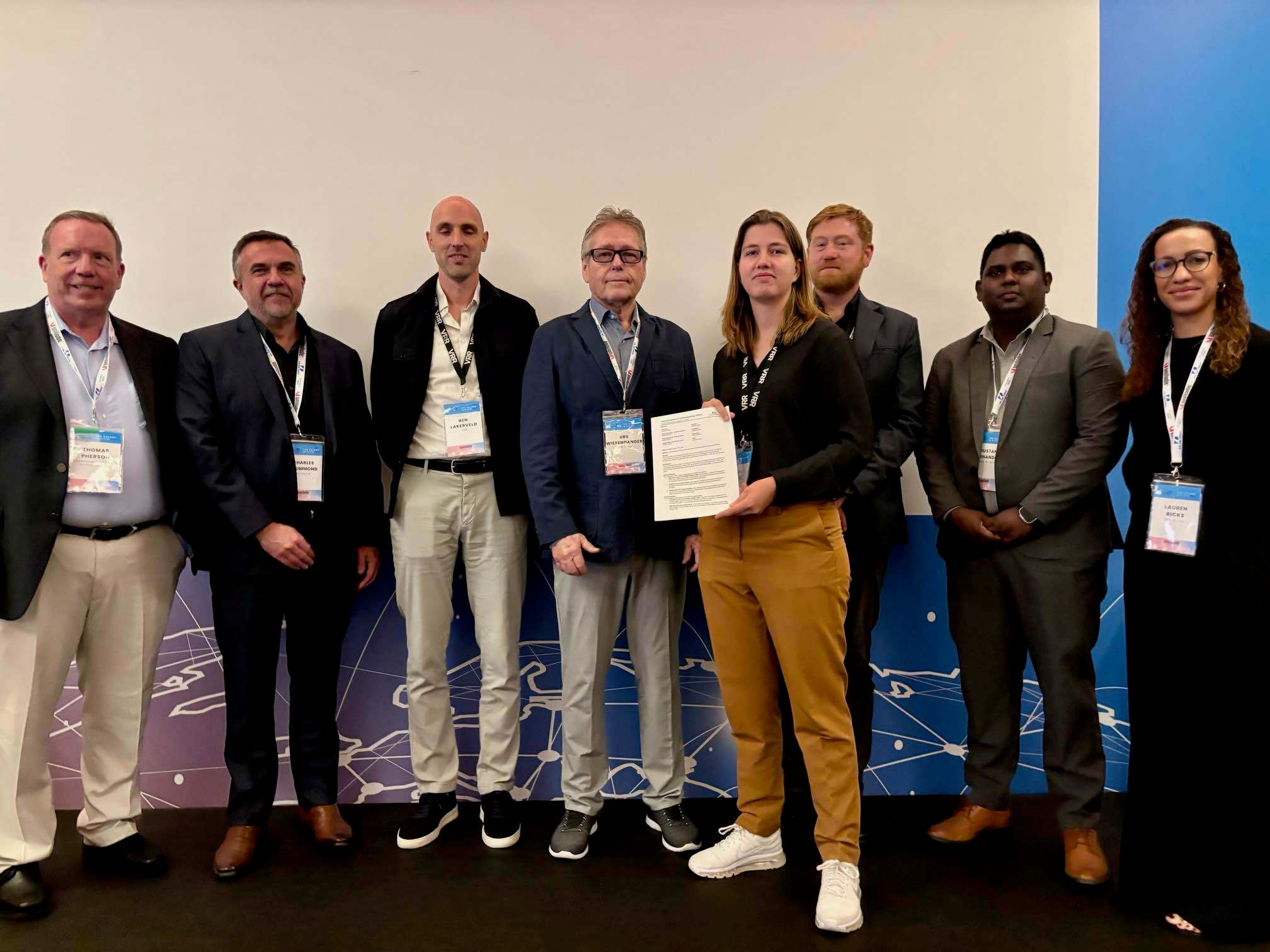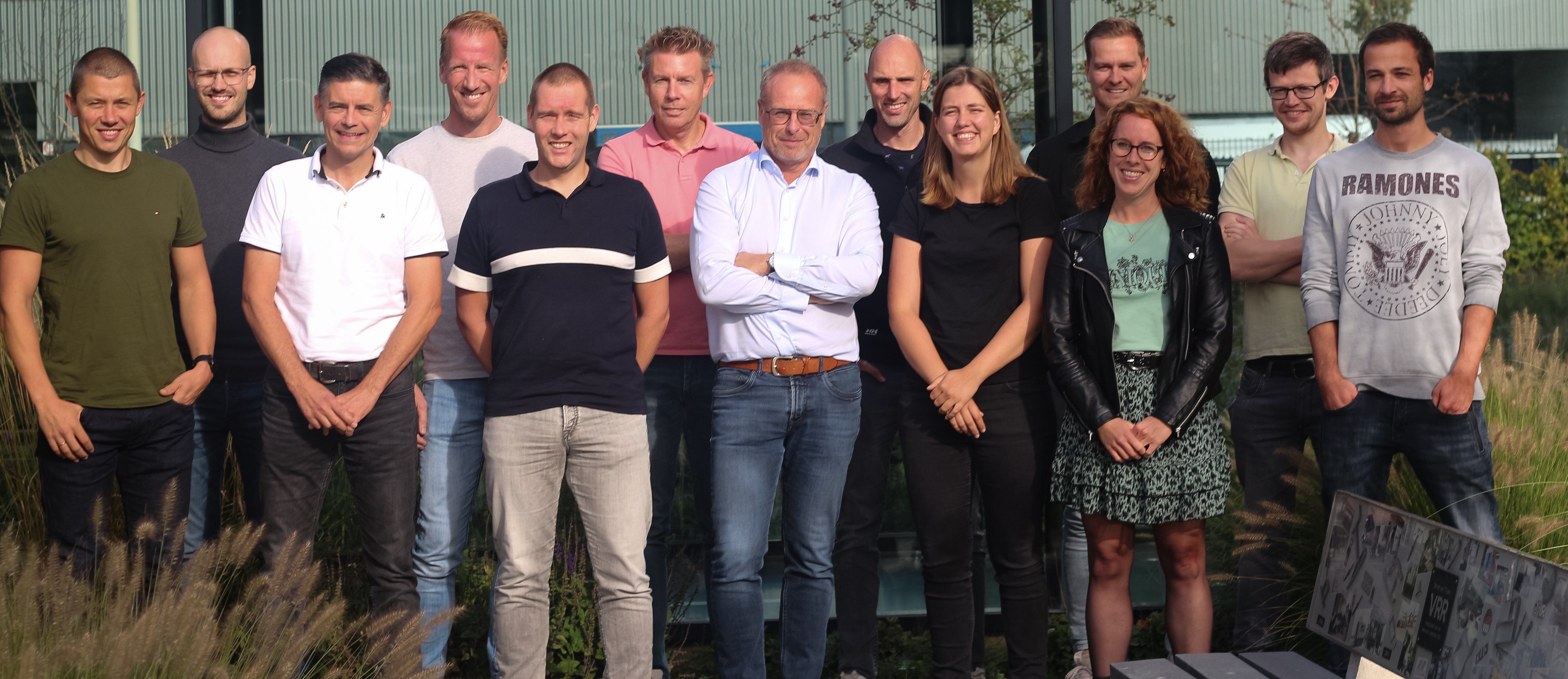VRR has always appreciated the value of knowledge sharing. The topic “How to develop a sustainability strategy that best fits our organisation” is no different. This article is the second in a series that describes our sustainability efforts over the next months and years. Please follow us on this exciting and essential journey.
Sustainability has been a strategic and operational priority for VRR since 2022. It’s a radical change in how we direct our business and conduct our day-to-day work. But a sustainability strategy can’t be enforced from the top down. It has to involve everyone from across the company. And therein lies our challenge: How do we engage all our employees in our sustainability initiatives?
The steps we’ve taken so far, while complex and time-consuming, have got us off to a good start. They include:
- Formalising our approach in a sustainability strategy
- Identifying the pillars supporting the strategy (Product, People, Emissions and Governance)
- Establishing specific goals for each pillar and setting up project groups to achieve those goals
- Getting tips from a global leader on developing a sustainability programme.
But though we’ve made a conscious decision to become a sustainable company, we know we have a long way to go. And the more we advance, the more we realise our journey is not so simple. While it is thrilling to see colleagues embrace our initiatives with enthusiasm, it is no surprise that some are more hesitant. A few might even be resistant.
Of course, it’s never easy to get every single person to wholeheartedly accept a company-wide change. In this case, the issue may be novel, but the desire to engage all of our employees is not. Therefore, we felt it was time to speak to an expert who lives and breathes sustainability and change management.
We turned to Céline Hourcade, Founder and Managing Director of Change Horizon in Switzerland. Her company advises aviation and logistics organisations looking to build business resilience by embedding sustainability in their business strategy and corporate culture. The she and her team employ include establishing concrete sustainability goals and projects managing change and engaging .
We’ve summarised the conversation into eight decisive actions so other companies in our position can receive the benefit of her excellent advice. In the meantime, we’re working hard on implementing all her recommendations.
1. Appreciate the importance of engaging employees in your sustainability efforts
Changing employee behaviour can be tricky in any situation, but when it comes to launching sustainability initiatives, it’s especially challenging. Most workers can readily grasp the significance of cutting costs or shortening lead times. Reducing your environmental footprint is a more elusive concept, however. Having a vision and strategy is simply not enough to win over your workforce.
“Change doesn’t exist solely in a strategy document,” says Céline. “If you want sustainability to be part of your culture, a reality, you have to excite and involve your employees. That requires a lot of communication, education and engagement.”
But how easy is that in practice? Céline explains the importance of leaders developing and promoting real corporate values. They need to look carefully at how things are done and how people behave. They must also understand that it’s a long journey, not an overnight transition.
“You can’t decide to just make change happen,” continues Céline. “You must slowly embed new principles into every task and decision-making process.”

2. Establish a common language and lend a listening ear
Unfortunately, there is no single way to embed sustainability into a company, but clearly defining the word “sustainability” is something all leaders should do. Sustainability is such a broad term that it can mean different things to different people. To some, it’s all about the environment. To others, it’s also about societal issues. Get off to a good start by ensuring everyone speaks the same language.
Then get everyone involved. At the strategy stage, only a select number of employees are committed. Now it’s time to educate and engage every employee to have any chance of achieving your goals. And that doesn’t start and end with telling them what you mean by sustainability, what your goals are and what the rationale is. You also have to listen to them.
“Ask what matters to them,” suggests Céline. “Ask them how they feel they could contribute to sustainability on a day-to-day basis. It’s a fabulous opportunity to have a broader employee engagement approach, one where you give them a chance to contribute and ask questions.”
3. Tolerate normal human behaviour and learn to compromise a little
There’s a universal truth underpinning change in the workplace: a number of people will always resist. For some, change will stir up negative emotions like anxiety, confusion and cynicism. It’s not always easy to adapt to a new situation, especially one forced upon you. Consequently, leaders seeking to embed sustainability throughout their company may find it helpful to learn a little change management theory:
In business, few of us are frontrunners. These enterprising people use their imagination to plan ahead and are willing to take risks. Most of us are followers instead. We don’t actively resist change but wait to see if the path laid before us is safe to follow. Even though we’re uncertain, we don’t want to be left behind. The remaining few are change resistors whose values conflict with the new business model.
“But that’s okay,” says Céline reassuringly. “In a transformational initiative, there will always be people who do not align with the new version of your company. Change is a process that won’t please everyone. That’s life! Still, you can compromise on many things, just not the essence of your vision.”

4. Overcome resistance to change by understanding what’s behind it
There are many ways employees can resist the implementation of sustainability initiatives, or any other type of change for that matter. Some reactions are obvious, like complaining, not attending workshops, or refusing to change a well-established process. Some are less obvious, like absenteeism, forgetting commitments or ‘accidentally’ misunderstanding instructions.
“Identify pockets of resistance and understand what’s behind it,” counsels Céline. “Is it a fear of losing something, like their position? Is it a lack of understanding or inclusion? Do some research. Sometimes knowledge can help you overcome that resistance.”
What if you discover that the resistance is about values? When the company’s new direction doesn’t align with certain employees, you have a mismatch of values. One-to-one conversations may help, but when all else fails, understand that there will always be some people who won’t care about sustainability.
5. Be bold but realistic in your ambitions
Working closely with clients as they strive to implement a sustainability strategy has given Céline some insights into the missteps that can stall progress. One miscalculation she often comes across is ‘thinking too big’. It’s important to be bold in your ambitions, but you still need to have achievable targets.
She advocates quick wins. These don’t have to be big, costly projects, but the change must be visible. If you give employees something they can embrace, next time, they’re much more willing to tackle something bigger for an even bigger impact.
“If you want to climb Everest, you have to train first and be in good shape,” says Céline, “and it’s certainly not the first mountain you climb. If your first objective is to be carbon-neutral and there’s nothing in between, it’s meaningless. You don’t connect with people that way. Feed them with small successes, and you’ll convince them to follow you.”
6. Accept that there are many different attitudes towards sustainability
In Céline’s experience, introducing sustainability as a corporate strategy generates many opinions throughout the workforce. This is something management must anticipate and acknowledge. Not all employees will be on the same page. Some may even be reading a different book. And that can be hard to accept.
To those leading the charge, the sustainability argument is already won. Therefore, they’re at risk of interpreting anyone questioning their vision as uncaring or uninformed. Céline warns that frontrunners shouldn’t fall into the trap of assuming that everyone wants to do something to save the planet or correct societal inequalities.
“My company does a lot of anonymous employee surveys,” she says, “and differences of opinion can run along many group lines: age, gender, location, even length of employment service. Some people don’t see the point of a corporate sustainability strategy. Others are not familiar with the topic of sustainability. There are many, many viewpoints out there.”
The key to hitting the right note when communicating your strategy, it seems, is tolerance. If you can accept the fact that everyone has their own perspective on sustainability, you’ll have a better chance of reaching a consensus.

7. Focus on real business issues, not feelings
For some, it can be difficult to say out loud that they don’t really know what sustainability means or that they don’t agree with your proposed changes. They don’t want to appear foolish or out of step with everyone else. Unfortunately, those feelings can lead to resentment and pushback among employees if left unaddressed.
“We must remember there are no stupid questions,” says the Managing Director of Change Horizon. “Sustainability is still a new concept in the business world. In the personal sphere, it can also be highly political. Understand you can still care about the planet but not see the same problems or solutions.”
Her best advice is to remove politics and personal feelings from discussions. Avoid philosophical debates and talk instead about practical business issues. Ask your employees if the company can survive doing business as it did 35 years ago or if it has to evolve. Examine with them the tangible consequences of not changing, like unhappy customers or the withdrawal of regulatory approval. This will help them to open up.
8. Set personal goals and rewards as motivation for individuals to change
A challenging aspect of implementing a sustainability programme is motivating workers to incorporate your sustainability goals into their day-to-day work. So, how can leaders encourage their employees to not only understand the programme’s rationale but also become personally involved?
Céline recommends a pragmatic approach by linking objectives with your reward schemes. Insert sustainability targets into everyone’s job description, alongside traditional KPIs such as sales and profitability, then link their performance to annual appraisals and compensation packages. This will help employees to change their focus.
“But this must start at the top,” instructs Céline. “Once the CEO and the senior managers have been given concrete KPIs, and the employees see their performance is measured and rewarded, you can roll out KPIs throughout the company. This is how you can ingrain sustainability awareness into day-to-day activities.”
Conclusion
To become a sustainable company, you need to engage your employees from the start. Approach this as you would any other significant business issue: develop a strategy, communicate it effectively, and reward performance.
We thank Céline Hourcade, Founder and Managing Director of Change Horizon, for her valuable insights and practical advice. We will certainly be acting on her recommendations at VRR as we continue our sustainability journey. We hope you also find her tips useful.
About Céline Hourcade
Céline is not just the founder and managing director of Change Horizon. She’s also a mother who wants a fair and sustainable world for her son and daughter and a nature lover who loves outdoor activities. Her work in pushing for sustainability in aviation and logistics was recognized in 2022 with the LogiSYM Thought Leadership Champion Award. Her desire is simple: to make our planet viable and beautiful for the future.
Subscribe to our newsletter
Find this article inspirational? Subscribe to our newsletter and be the first to receive new articles!

.png)



